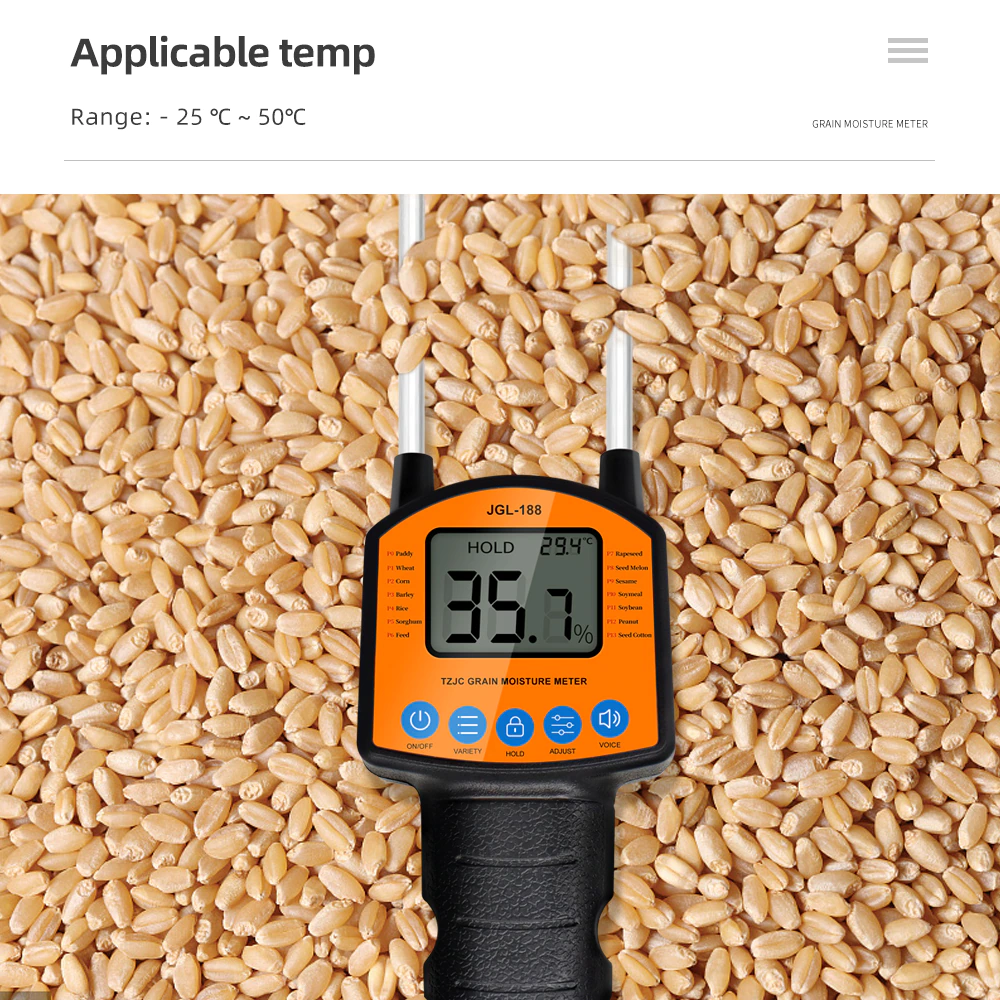A grain moisture monitor is a device used to measure the moisture content in harvested grains like maize, rice, wheat, beans, and millet. Monitoring grain moisture is crucial for safe storage, minimizing post-harvest losses, and meeting buyer or export standards.
Every year, Ugandan farmers and traders lose a significant portion of their harvest due to poor post-harvest handling—especially from storing grains with too much moisture.
How Grain Moisture Monitors Work:
- Most handheld models use capacitance or resistance technology to detect water levels in a sample.
- The grain is either poured into a chamber or probed with metal pins.
- A digital display shows the moisture percentage—typically accurate within ±0.5%.
📦 Common Types of Grain Moisture Monitors:
- Capacitance-type: Sample is placed in a chamber; suitable for most grains.
- Pin/probe-type: Metal probes inserted into bags or heaps; ideal for fast spot checks.
- Infrared-type: Advanced models using IR sensors—more expensive, high-precision.
✅ Why It’s Essential to use Grain Moisture Meters
- Prevents Mold, rot, aflatoxin contamination
- Reduces weight loss and preserves grain quality
- Helps meet buyer and market moisture requirements
- Increases shelf life and profitability
At Accurate Weighing Scales we ensure Proper moisture monitoring, from the time crops leave the field to when they’re stored or sold, is one of the most effective ways to protect profits and quality step by step.
🌤️ 1. Harvest Timing: Start Smart
Harvesting grains at the right time is the first step to good moisture management.
- Maize should be harvested when field moisture drops to around 20–25%.
- Delaying too long risks fungal growth or insect infestation.
✅ Use a grain moisture meter to test before harvesting large areas.
☀️ 2. Drying: The Critical Phase
Freshly harvested grain must be dried immediately to reduce moisture.
- Sun-drying is common, but it must be done on clean surfaces like tarpaulins.
- Avoid drying directly on bare soil—grains can reabsorb moisture overnight.
Target Moisture Levels for Storage:
- Maize: 12–13.5%
- Beans: 11–12%
- Rice (milled): 12–13%
✅ Recheck moisture levels after drying to ensure safety for storage.
🧪 3. Testing: Use a Grain Moisture Meter
Invest in a handheld grain moisture meter.
- Test different bags or sections of your grain stock.
- Avoid assuming all grain is dry just because it “feels” ready.
➡ Why it’s important: Even 1–2% extra moisture can lead to Mold, spoilage, and price reduction.
🏠 4. Storage: Seal in Quality
Once dried, store grain in:
- Clean, dry, and ventilated spaces
- Airtight bags (like PICS bags) or woven sacks with pallets underneath
- Away from direct moisture or leaking roofs
✅ Maintain storage room humidity below 65% to prevent reabsorption.
💰 5. Sell Smarter, Not Sooner
Grain that’s properly dried and stored can be:
- Held longer for better market prices
- Accepted by more buyers (especially export or industrial buyers)
- Protected from Mold and aflatoxins
🌟 Proper moisture control directly leads to higher selling prices and fewer losses.
📈 Final Thoughts
Grain moisture monitoring is not just a technical process—it’s a profit protection strategy. From field harvest to drying, testing, and storage, each step counts. With just one affordable tool—a moisture meter—you gain control over your grain quality, market readiness, and income.

